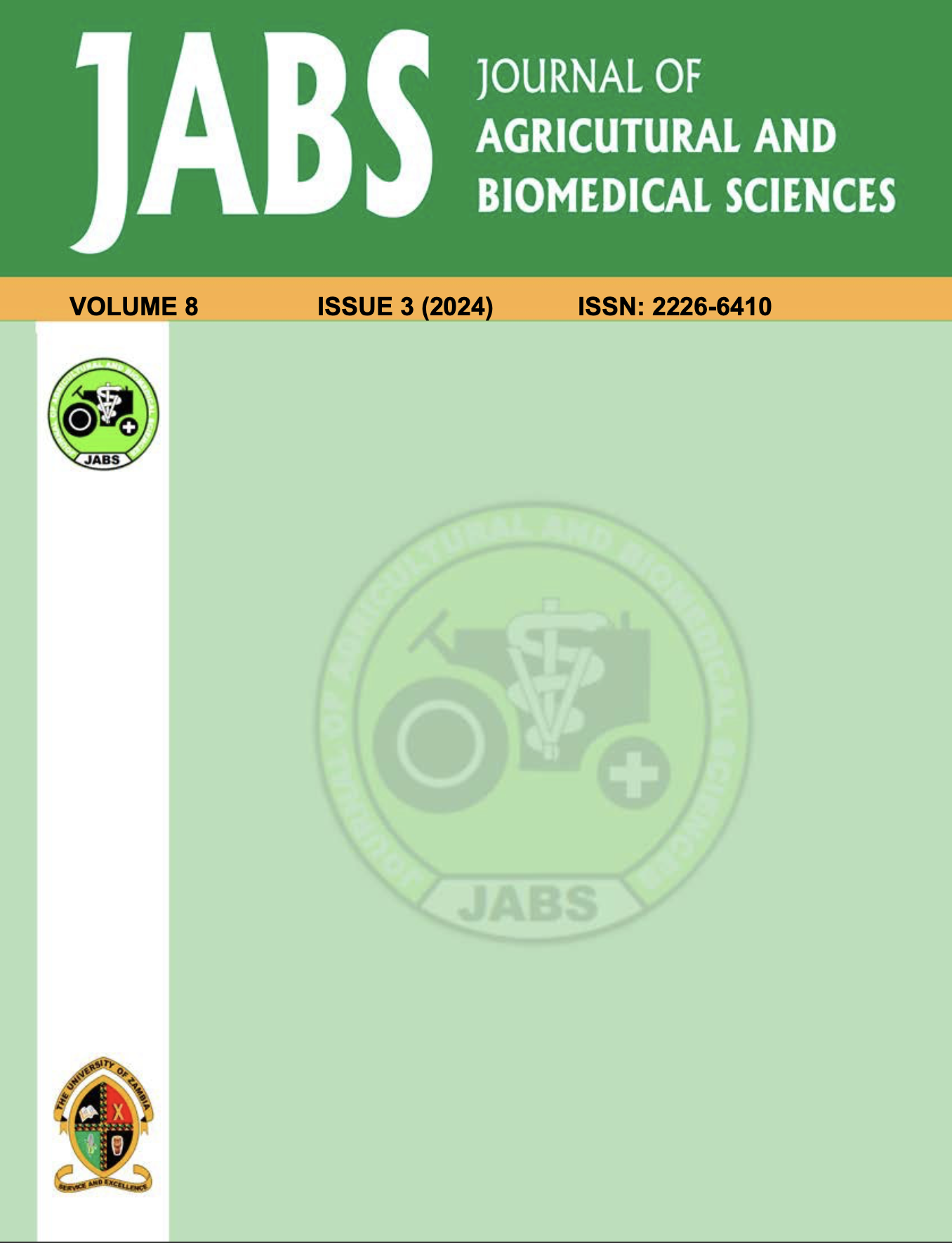Evaluating the effects of garlic (Allium sativum) as a feed additive on the growth performance and immune response in broiler chickens
Abstract
In a quest to find affordable, antibiotics free and readily available means of increasing broiler meat productivity, a number of natural feed additives have been tested and suggested. Garlic (Allium sativum) has emerged as a preferable alternative to synthetic feed additives. The aim of this study was to assess the effect of garlic as a feed additive on feed intake, weight gain, feed conversion ratio, and immune response. 300-day-old chicks were acclimatized for 2 weeks and then randomly assigned to 5 treatments (0.00%, 0.25%, 0.50%, 0.75%, and 1.00% garlic inclusion levels) with replicates. Mean weekly feed intake, weight gain, feed conversion ratio, and differential leucocyte counts (lymphocytes, heterophils, basophils, eosinophils, and monocytes) were analyzed for treatment effects. There were significant differences among the means across all treatments for all dependent variables except mean weekly body weight gain at 2 weeks. Garlic supplementation significantly influenced body weight from three to six weeks of age, with the control group (0.00%) consistently exhibiting the lowest body weight. At six weeks, body weight was highest at 0.75%, followed by 1.00%, 0.50%, and 0.25% garlic inclusion levels, demonstrating the positive impact of dietary garlic on growth performance. It was also observed that garlic supplementation led to increases in the basophil and monocyte counts, suggesting a bolstered immune system.
Published
2025-04-10
How to Cite
1.
Mufungwe J, Moono M, Chimbaka I, Kanyinji F, Odubote I, Harrison S, Nkhuwa J. Evaluating the effects of garlic (Allium sativum) as a feed additive on the growth performance and immune response in broiler chickens. Journal of Agricultural and Biomedical Sciences [Internet]. 10Apr.2025 [cited 7Jun.2025];8(3). Available from: https://law.unza.zm/index.php/JABS/article/view/1344
Section
Agriculture Sciences

This work is licensed under a Creative Commons Attribution 4.0 International License.
Copyright: ©️ JABS. Articles in this journal are distributed under the terms of the Creative Commons Attribution License Creative Commons Attribution License (CC BY), which permits unrestricted use, distribution, and reproduction in any medium, provided the original author and source are credited.
